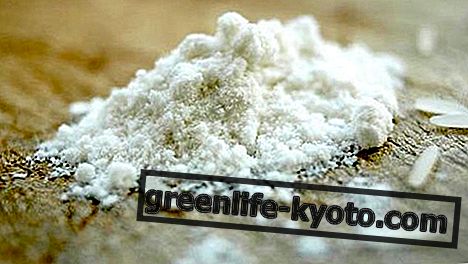
The controversies in the diagnosis
It is from the beginning of the last century that the motor instability of the child is described, especially by Anglo-Saxon authors. Different terminologies have been used as a function of descriptions and etiological hypotheses (hyperkinesia, psychomotor instability, minor brain dysfunction ...). The current definition proposed by the DSM IV (Diagnostic and Statistic Manual, 4th edition) groups the entire symptomatology under the term " Attention deficit / hyperactivity disorder " (ADHD), that is "a disorder of the neuropsychic development of the child and of the 'adolescent, characterized by inattention and impulsivity / hyperactivity'.
Specifically, three clinical forms are distinguished: inattentive, hyperactive and combined .
In the course of development the same subject can evolve from one category to another, manifesting in the various age phases the three different psychopathological dimensions in a variable way.
All these symptoms are not caused by cognitive impairment (mental retardation) but by objective difficulties in self-control and planning skills. They are persistent in all contexts and life situations of the child, causing a significant limitation of daily activities.
Attention deficit hyperactivity disorder (ADHD) is defined as impulsiveness not suited to age, poor concentration and physical hyperactivity. This disorder is associated with learning difficulties and inability to socialize. There is impairment of focal attention (ability to pay attention to a specific stimulus, neglecting irrelevant details that are not useful to the task underway) and sustained attention, ie the ability to maintain active attention over time during school activities, in homework, in the game or in simple daily activities. They answer without thinking, they almost never manage to wait their turn in daily activities or games; often they get involved in dangerous activities without properly assessing the consequences. These children are generally described as "moved by a scooter", cannot stand still, if seated they move with their hands or feet, they frequently have the need to stand up and move without a purpose and a precise goal.
Since there are no adequate laboratory or physical examinations, the diagnosis is formulated based on the clinical history of the symptoms and behavior. It is therefore a subjective diagnosis and, therefore, in many cases controversies arise on the concept of normality of behavior, in particular for individuals of young age.
30-40% of children with ADHD have learning deficits, although in many cases the subjects are intelligent. Often this disorder is not diagnosed early and treated in childhood and, therefore, many adults, unaware of their pathology, are affected.
The ready-to-eat industry and careful parents
Instinctively some parents begin to think that the problem is associated with their children's diet . They know they can manifest negative reactions to sugars or other foods and therefore wonder if they are simply not suffering from an overreaction. In most cases these parents are absolutely right. In recent decades the amount of sugars, preservatives and dyes in industrially processed foods has gradually increased. Too many children consume ready-made foods. Since the organism is particularly vulnerable to the additives contained in such foods at an early age, it is not surprising that in many cases a toxic reaction develops. Sometimes this process occurs as a common allergy, for example with rhinorrhea and urticaria; in other cases, however, behavioral disorders occur.
The drug friend
500, 000 in 1985 to 11 million today, these are US data on the number of children diagnosed with ADHD; looks like an epidemic? Certainly, considering the fact that by reading the various questionnaires to formulate this diagnosis, to date any child could be affected. Once the diagnosis is made the use of the drug is triggered, the methylphenidate better known as RITALIN, is a stimulant of the central nervous system. It has a calming effect, and reduces impulsive behavior in children with ADHD. The mechanism of action of methylphenidate, like many other amphetamines, is still little known, but the side effects are well known. Another significant and well-known fact is the profits of pharmaceutical companies distributing psychotropic drugs that have grown exponentially since the 1980s, the same that have subsidized poor but persuasive scientific studies. Thus in Italy in March 2007 the Italian Medicines Agency (AIFA) again entered RITALIN on the market after removing it in 1980 due to the disastrous side effects. Methylphenidate has long been cataloged by the Italian Ministry of Health in the same drug table along with morphine, heroin, cocaine, LSD and opiates. I wonder, given the now saturated market for every type of drug, if it is no longer easy to invent a new disease, to be treated with an old drug! Because today pharmaceutical companies spend more on advertising than on research.
The European Medicines Agency (EMA) takes a stand and declares "Suicide-related behavior and hostility towards others have been observed to a significantly greater extent in children and adolescents treated with such drugs". To protect themselves from too easy a medicalization, parents, teachers and all the operators who are in daily contact with children and adolescents should be carefully informed and reflect on the true origins of this syndrome. Children do not need mind-altering drugs, but healthy and correct nutrition and responsible education. "Keep the televisions or playstations switched off and find something to do with your children" this is one of the advice of careful and well-informed psychologists and psychiatrists.
The natural way
Attention and behavioral problems are attributable to various factors. Some studies have shown that the frequent occurrence of otitis and the regular use of antibiotics, as well as premature birth, are associated with a greater possibility of developing the disorder. In food terms, the determining factors are food additives and food allergies, environmental allergens and heavy metal intoxication (lead, mercury, aluminum). Furthermore, a malfunctioning of the digestive system and an increase in intestinal permeability increase the quantity of metabolic toxins that compromise brain chemistry. Nutritional deficiencies of essential fatty acids, B-complex vitamins, iron, magnesium and other minerals also seem to play a fundamental role. Among the foods to be brought to the table during the week, important in various aspects, we have integral basmati rice (to be soaked about 1 hour before cooking), all green leafy vegetables, non-sulphured black molasses and dried fruit (walnuts and almonds). Refrain from consuming sugars and refined flours, colas and sweetened beverages.













